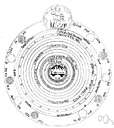

Sites polluted with recalcitrant compounds often respond better to bioaugmentation since the persistence of the chemical corresponds to the rarity of its degradation genes. The type of pollutant will also play a major role as to whether bioaugmentation is an appropriate strategy. However, it is worth the site operator’s time and money to consider MNA and biostimulation, as both treatments may be more cost-effective. The commercialization of bioaugmentation inocula is a thriving business, and many site operators may be convinced that bioaugmentation should be the primary bioremediation strategy. The decision to bioaugment should be made after a thorough site evaluation and, if possible, microcosm studies to evaluate the feasibility of the treatment ( Figure 1). Functional endpoints such as litter decomposition or the bait lamina feeding activity can also be included.Īs expected, the list of substances which have been assessed in these systems is dominated by pesticides including insecticides such as lindane or dimethoate, herbicides such as glyphosate, and fungicides such as carbendazim studies on other agrochemicals such as the veterinary pharmaceutical ivermectin, as well as metals and other chemicals are also available. Visible phytotoxicity symptoms, plant productivity/yield (e.g., photosynthetic activity, biomass, and seed production), microbial biomass, and microbial functions such as induced soil respiration, and the effect on selected invertebrate groups such as earthworms, nematodes, or enchytraeids constitute the typical ecotoxicological endpoints measured in these systems. Intact soil-core systems usually include a system for collecting the leachate allowing to measure key environmental fate parameters such as dissipation and degradation including the production of metabolites, soil mobility, leaching behavior, and bioaccumulation in plants and macroinvertebrates. However, other sizes and conditions, including outdoors conditions have also been used. The most common design for testing the fate and effects of pesticides and other chemicals in intact soil-core microcosm is based on soil cores of about 17 cm diameter and 40–60 cm deep collected in the field and transferred to a greenhouse or climatic chamber under controlled temperature and artificial rainfall conditions. The design and the application of the chemical should be adapted to the study objectives. Consequently, Terrestrial Model Ecosystems are not part of the standard regulatory testing requirements, although can be used for higher tier risk assessment under scientific justification as appropriate. However, no formal guideline at the EU regulatory level has been developed. A ring-test and field validation study was conducted in four European countries using the fungicide carbendazim, and later extended to other geographical regions. using the term Terrestrial Model Ecosystem. In Europe, a draft test guideline for intact soil-core microcosms was also discussed during the mid-1990s by Thomas Knacker et al. The test is usually continued for a minimum of 12 weeks from first application of the test substance to final harvest.

A soil core containing biota typical of the region of interest is treated with the test substance under controlled conditions in either a growth chamber or greenhouse. The test aims are to determine the potential fate and ecological effects of a chemical substance, including its transformation products, released to a specific terrestrial ecosystem. Soil-core microcosms are defined as physical miniaturized models of an interacting community of autotrophs, omnivores, herbivores, carnivores, and decomposers within an intact soil profile. Standardized protocols for conducting microcosm studies based on intact soil cores were introduced in the 1980s by the American Society for Testing and Materials (Standard E1197-87), and the US EPA Office of Prevention, Pesticides, and Toxic Substances (EPA/600/3-85/047), and included in regulatory programs a decade later as US EPA Guideline 850.2450 Terrestrial (Soil-Core) Microcosm Test. Tarazona, in Encyclopedia of Toxicology (Third Edition), 2014 Intact Soil-Core Microcosms and Terrestrial Model Ecosystems


 0 kommentar(er)
0 kommentar(er)
